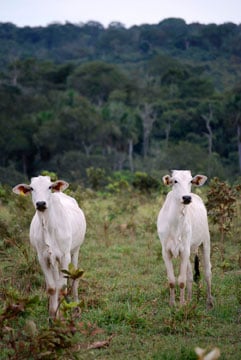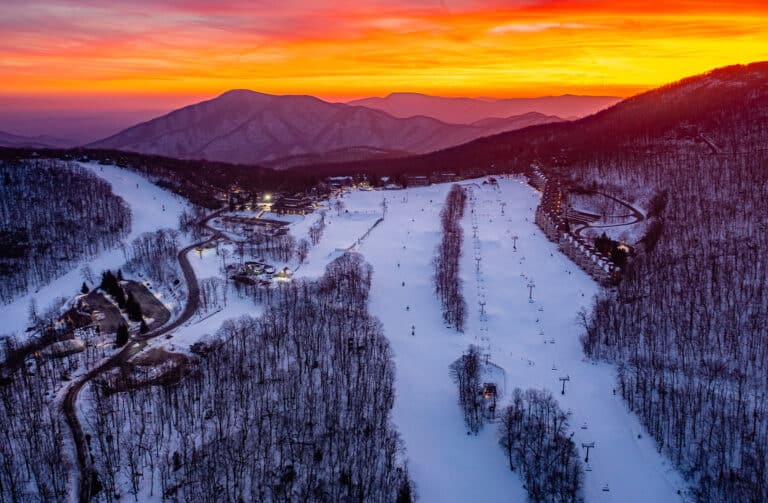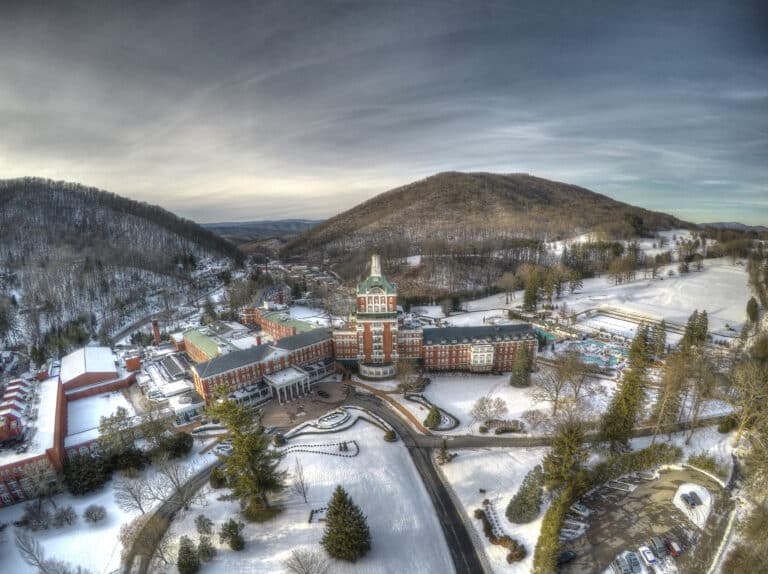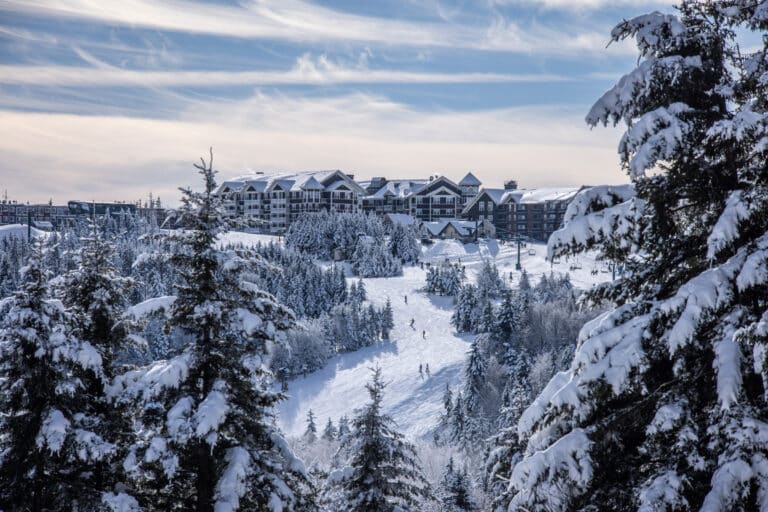Deforestation in tropical rainforests — from logging, coffee growing, meat and milk production and other economic activities — adds more CO2 to the atmosphere than the sum total of cars and trucks on the world’s roads. Pictured: Cattle in a clearcut portion of the Amazon Rainforest. Photo credit: iStockPhoto/Thinkstock
EarthTalk®
E – The Environmental Magazine
Dear EarthTalk: Is it true that cutting and burning trees adds more global warming pollution to the atmosphere than all the cars and trucks in the world combined? — Mitchell Vale, Houston, TX
By most accounts, deforestation in tropical rainforests adds more carbon dioxide to the atmosphere than the sum total of cars and trucks on the world’s roads. According to the World Carfree Network (WCN), cars and trucks account for about 14 percent of global carbon emissions, while most analysts attribute upwards of 15 percent to deforestation.
The reason that logging is so bad for the climate is that when trees are felled they release the carbon they are storing into the atmosphere, where it mingles with greenhouse gases from other sources and contributes to global warming accordingly. The upshot is that we should be doing as much to prevent deforestation as we are to increase fuel efficiency and reduce automobile usage.
According to the Environmental Defense Fund (EDF), a leading green group, 32 million acres of tropical rainforest were cut down each year between 2000 and 2009—and the pace of deforestation is only increasing. “Unless we change the present system that rewards forest destruction, forest clearing will put another 200 billion tons of carbon into the atmosphere in coming decades…,” says EDF.
“Any realistic plan to reduce global warming pollution sufficiently—and in time—to avoid dangerous consequences must rely in part on preserving tropical forests,” reports EDF. But it’s hard to convince the poor residents of the Amazon basin and other tropical regions of the world to stop cutting down trees when the forests are still worth more dead than alive. “Conservation costs money, while profits from timber, charcoal, pasture and cropland drive people to cut down forests,” adds EDF. Exacerbating global warming isn’t the only negative impact of tropical deforestation. It also wipes out biodiversity: More than half of the world’s plant and animal species live in tropical rainforests.
One way some tropical countries are reducing deforestation is through participation in the United Nations’ Reducing Emissions from Deforestation and Forest Degradation (REDD) program. REDD essentially works to establish incentives for the people who care for the forest to manage it sustainably while still being able to benefit economically. Examples include using less land (and therefore cutting fewer trees) for activities such as coffee growing and meat and milk production. Participating nations can then accrue and sell carbon pollution credits when they can prove they have lowered deforestation below a baseline. The REDD program has channeled over $117 million in direct financial aid and educational support into national deforestation reduction efforts in 44 developing countries across Africa, Asia and Latin America since its 2008 inception.
Brazil is among the countries embracing REDD among other efforts to reduce carbon emissions. Thanks to the program, Brazil has slowed deforestation within its borders by 40 percent since 2008 and is on track to achieve an 80 percent reduction by 2020. Environmentalists are optimistic that the initial success of REDD in Brazil bodes well for reducing deforestation in other parts of the tropics as well.
CONTACTS: WCN, www.worldcarfree.net; EDF, www.edf.org; REDD, www.un-redd.org.
EarthTalk® is written and edited by Roddy Scheer and Doug Moss and is a registered trademark of E – The Environmental Magazine (www.emagazine.com). Send questions to: [email protected]. Subscribe: www.emagazine.com/subscribe. Free Trial Issue: www.emagazine.com/trial.








